

Price: $240
Weight: 9.5 oz. (men’s medium)
Insulation: 40g Coreloft Compact (core only)
What we like: Ultralight, versatile, and a nice balance of breathability and protection.
What we don’t: Limited warmth for the price.
See the Men's Arc'teryx Atom SL See the Women's Arc'teryx Atom SL
Within Arc’teryx’s popular Atom synthetic jacket series, the “SL” slots in as the lightest and most focused of the bunch. It isn’t very warm with insulation only in the torso and a minimalist, alpine-centric build, but over years of using multiple variations of the jacket, it’s proven to be one of the most versatile pieces of gear I’ve tested. From mid-winter runs and backcountry tours to shoulder-season hikes, the Atom SL is an incredibly capable and well-rounded companion. Below we break down our experiences with the latest version of the Atom SL. To see how it stacks up, see our articles on the best synthetic jackets and best midlayers.
Among synthetic jackets, the Arc’teryx Atom SL Hoody is a truly unique design. With thin, 40-gram Coreloft Compact insulation in the core and no fill elsewhere, it’s certainly not warm—I’m comfortable when inactive and hanging around camp in temperatures down to the low 50s Fahrenheit. However, paired with thoughtful touches like stretchy fleece side panels, a wind- and water-resistant shell, tall collar, and mesh lining on the upper arms, the Atom SL excels in a wide range of activities. It’s my favorite outer layer when running or skinning on snowy and frigid days (around 15 degrees and sometimes below). The shell cuts just enough wind, the non-insulated hood keeps me protected without overheating, and the snug fit maximizes warmth. Plus, I’ve found it to be a really nice balance for wearing on cool-weather shoulder-season hikes. In many ways, it functions like a lightly insulated windbreaker in these instances.
As a midlayer, the Atom SL is equally versatile. Among hooded jackets, it’s one of the easiest to layer under a shell as the thin, uninsulated hood rolls and secures with a tab at the back of the neck (a new addition for the 2021 model). I often wear it under my ski jacket for the descents while touring, and I also commonly use it for resort days towards the beginning and end of the season (or in milder weather when temperatures are hovering around freezing). Another layer of insulation will likely be necessary on especially cold days or extended backcountry trips, but the Atom SL strikes a nice middle ground for a fairly wide range of uses and conditions.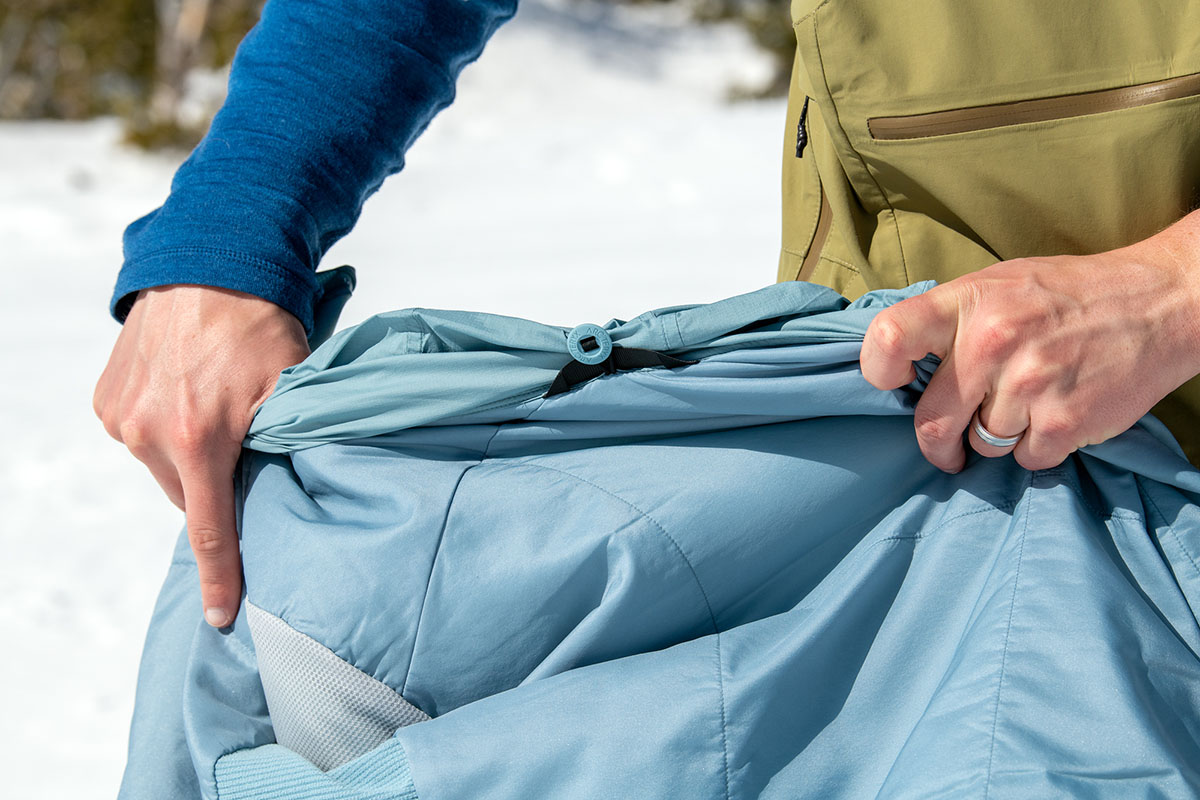
Unlike many current active insulation jackets, the Atom SL offers a fair amount of weather resistance. As I mentioned above, the shell fabric does a great job taking the sting out of head-on wind (the stretchy side panels allow quite a bit more air to come through). Combined with a durable water repellent (DWR) coating, the jacket effectively repels light rain and snow. To be clear, you’ll want to swap to a fully waterproof shell if the weather takes a serious turn, but I’ve been consistently impressed by how long I’m able to continue wearing the Atom SL, particularly in dry snow. Additionally, since this is a synthetic piece, the jacket will continue to insulate when wet. And even when the shell fabric has given in and starts absorbing moisture, its thin build tends to dry out quickly (unless of course it’s stuffed away in a wet ski backpack). 
When it comes time to batten down the hatches, the Arc'teryx Atom SL Hoody is well-equipped for the job. The hood is climbing helmet-compatible but cinches down nicely when wearing just a ballcap or beanie, and it even stays effectively in place when going without head protection at all. Rounding out the features, the collar sits tall on the face (it reaches my lower lip when zipped up), the hem cinches securely, and the jacket’s long arms and extended panels of fabric over the back of the hands increase coverage. All in all, considering its light and fairly minimalist build, the Atom SL is a surprisingly capable barrier against the elements.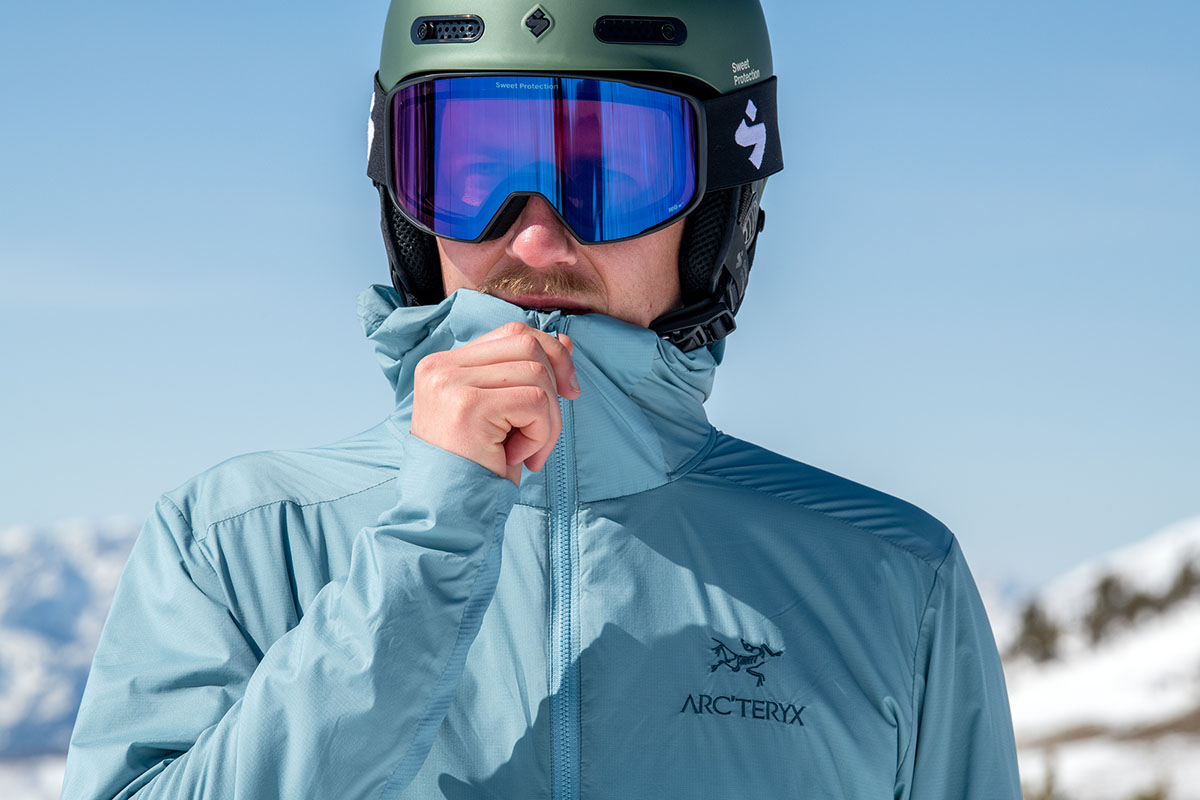
It’s common to trade off breathability for weather protection, but I’ve found the Atom SL manages a really effective balance of the two. The nylon shell isn’t particularly air-permeable (a plus for blocking wind), but the stretch fleece side panels do a good job releasing hot air, particularly during moderate activities like hiking. Those fleece panels extend all the way from the hem to under the arms and wrists, which helps keep you from overheating. Plus, the jacket’s minimalist insulation and mesh lining in the arms keep it from feeling uncomfortable and clammy. That said, the Atom can’t match Arc’teryx’s own Proton Lightweight in outright breathability, and I rarely opt for the Atom SL for touring in moderate temperatures (mid 20s Fahrenheit), especially if the sun is out. But for an insulated jacket that’s still decently weather-resistant, the Atom SL gets solid marks here.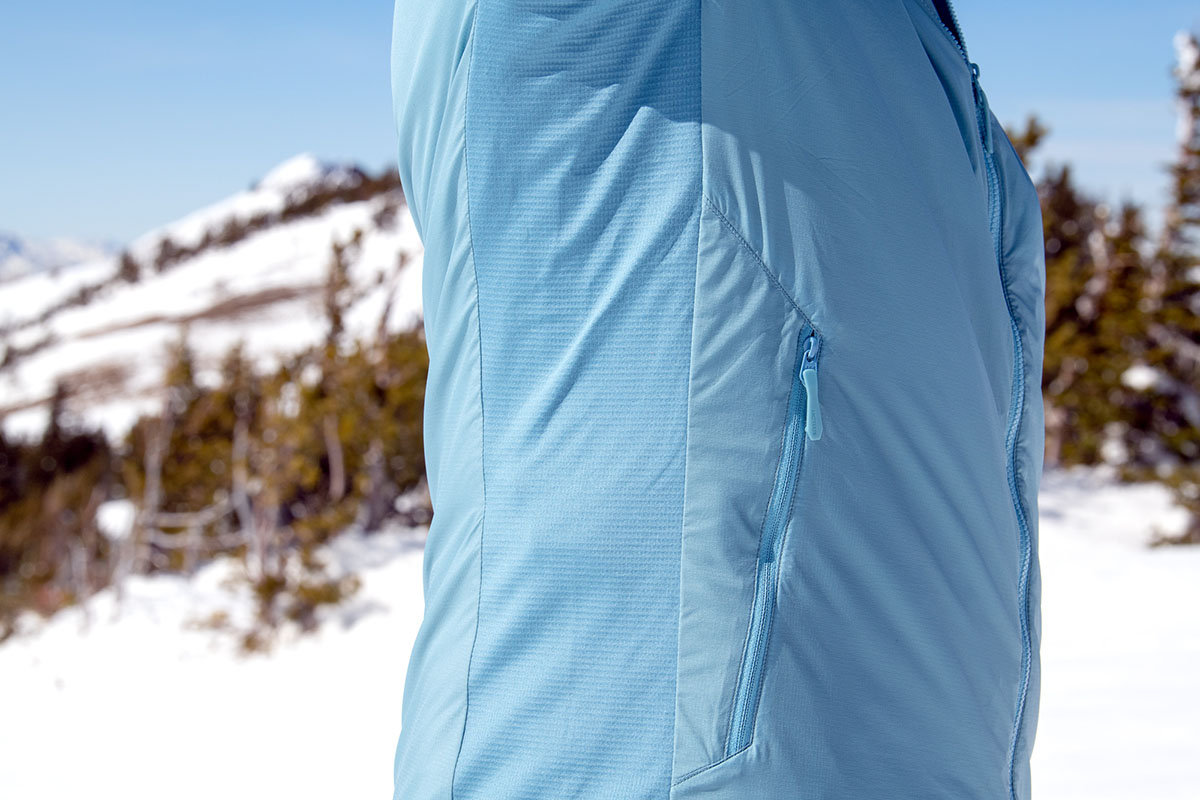
The “SL” in the Atom’s name is short for superlight, and my men’s medium hoody backs that up with a 9.5-ounce weight on our scale (an exact match to its listed weight). This puts it well under the rest of the Atom lineup: the LT (“lightweight”) is 13.2 ounces while the AR (“all round”) clocks in at 1 pound even, although both options are significantly warmer with insulation throughout the entire build. The aforementioned Proton FL comes at 11.4 ounces, and Arc’teryx’s climbing-specific Nuclei FL is also heavier at 11.5 ounces. Outside of Arc’teryx’s lineup, Patagonia’s Thermal Airshed features a similar insulation design with synthetic fill only at the front and under the arms and comes in lighter at 8.3 ounces, although it lacks both a hood and hand pockets. All in all, you’ll be hard-pressed to find comparable performance and versatility for less weight.
As expected, the Atom SL is quite packable too, although we’re disappointed Arc’teryx doesn’t include a stuff sack or dedicated pocket (which would be a logical fit given its weight and intended uses). That said, you can roll the jacket up into its hood and secure it with the cinch. Fully compressed, the jacket is about the size of a large grapefruit, and it’s easy to fit into just about any pack (I even squeeze it into the back of my 5L running vest on occasion).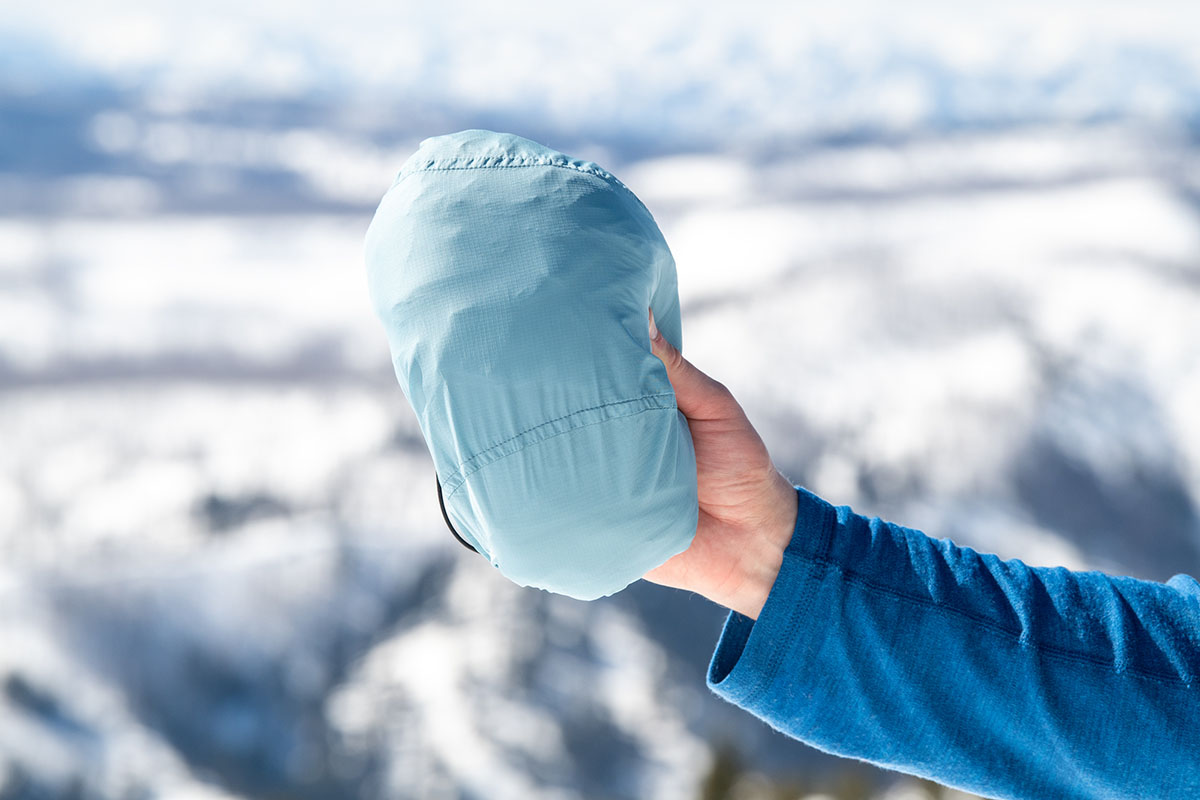
Like its warmer siblings, the Arc’teryx Atom SL Hoody scores high marks in comfort. The interior lining is a mix of fleece along the sides and underarms, mesh in the upper half of the sleeves, and a thin synthetic around the core—all of which are soft and surprisingly cozy. Additionally, with the long sections of stretchy polyester along the sides and a trim fit, the jacket moves exceptionally well. This mobility makes it a nice match for a wide range of activities, from backcountry skiing to climbing to wearing every day in the shoulder seasons (provided the taller hand pockets aren’t a problem). It’s even a viable option for biking in the right temperatures, as the longer sleeves and extended back length offer great coverage.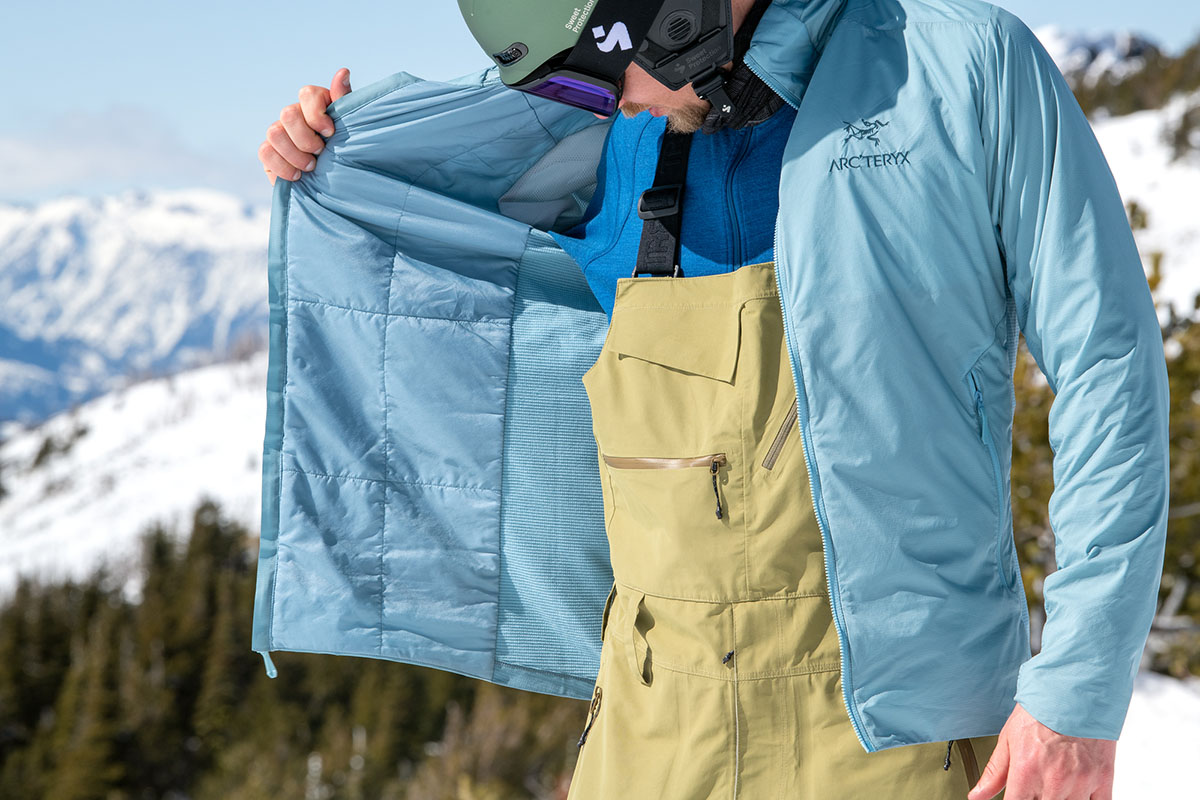
Given its focus on shaving weight, the Atom SL has a fairly pared-down feature set. Starting with the StormHood, it’s sized to fit over a climbing helmet but is easily adjustable with a rear cinch that tightens both around the sides and top of the forehead. I wore the prior-generation SL (which had a nearly identical hood design) in high winds while backpacking in Patagonia—strong enough that we had to lie down to keep from getting blown over—and it stayed securely in place. The only difference is that the latest model boasts the aforementioned tab at the back of the neck, which allows the hood to stow out of the way when not in use (a positive addition, in my opinion).
As far as adjustability goes, the hem cinches behind the right hip, and pulling the drawcord secures the jacket around the back. This has proven to be an effective solution: the simple design keeps weight down, still seals solidly in place, and doesn’t pull the jacket to one side when tightened. The cuffs are equally well-thought-out: there’s soft and stretchy knit polyester along the bottom half, while the back of the hand has a longer length for added coverage. You don’t get a perfect seal, but the length and good all-around mobility mean they stay nicely in place even when reaching overhead.
In terms of storage, Arc’teryx stuck to the basics with two zippered hand pockets. These are set higher on the body, so you can easily access them when wearing a pack or climbing harness. The taller height does mean your hands don’t rest as naturally in them, which is a downside for daily use. However, the interiors are quite generous and can easily accommodate my gloved hands. And given the jacket’s performance intentions and the fact that there are no other storage options, this feels like a very reasonable compromise.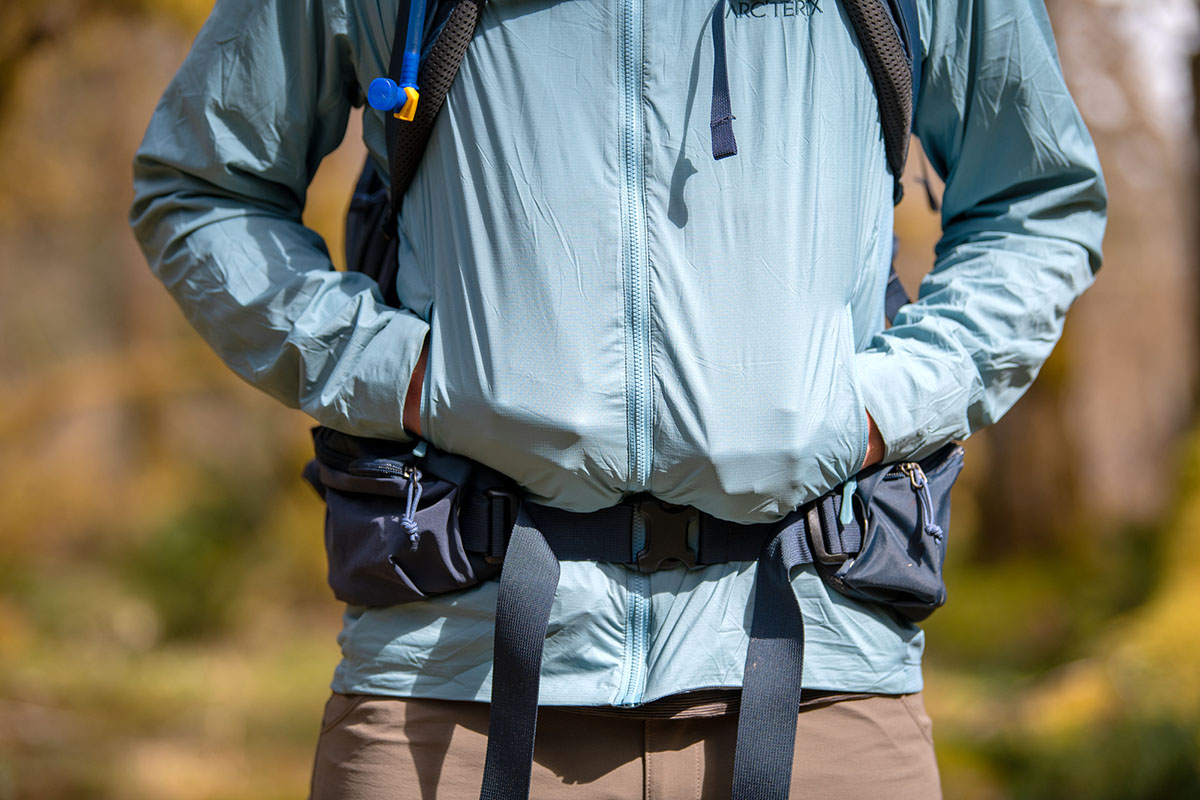
Ultralight products aren’t known for their durability, but Arc’teryx has toed a nice line between weight savings and toughness with the Atom SL. The jacket uses a 20-denier (D) shell fabric, which is undoubtedly light but significantly more durable than many UL models (one example is Patagonia’s ultra-thin 10D Micro Puff, which we found to be considerably more tear-prone). And after about 5 months of consistent use as both a mid- and outer layer, it’s still in fantastic shape. The shell has no tears, the interior still looks and feels great, and I’ve had no hiccups with the performance of the zippers or cinch cords. Even the stretchy fabrics along the side panels haven’t loosened or lost their shape. And based on how well my prior SL held up to 3+ years of abuse—and that model technically had a less durable face fabric—I feel the latest jacket should have a good lifespan.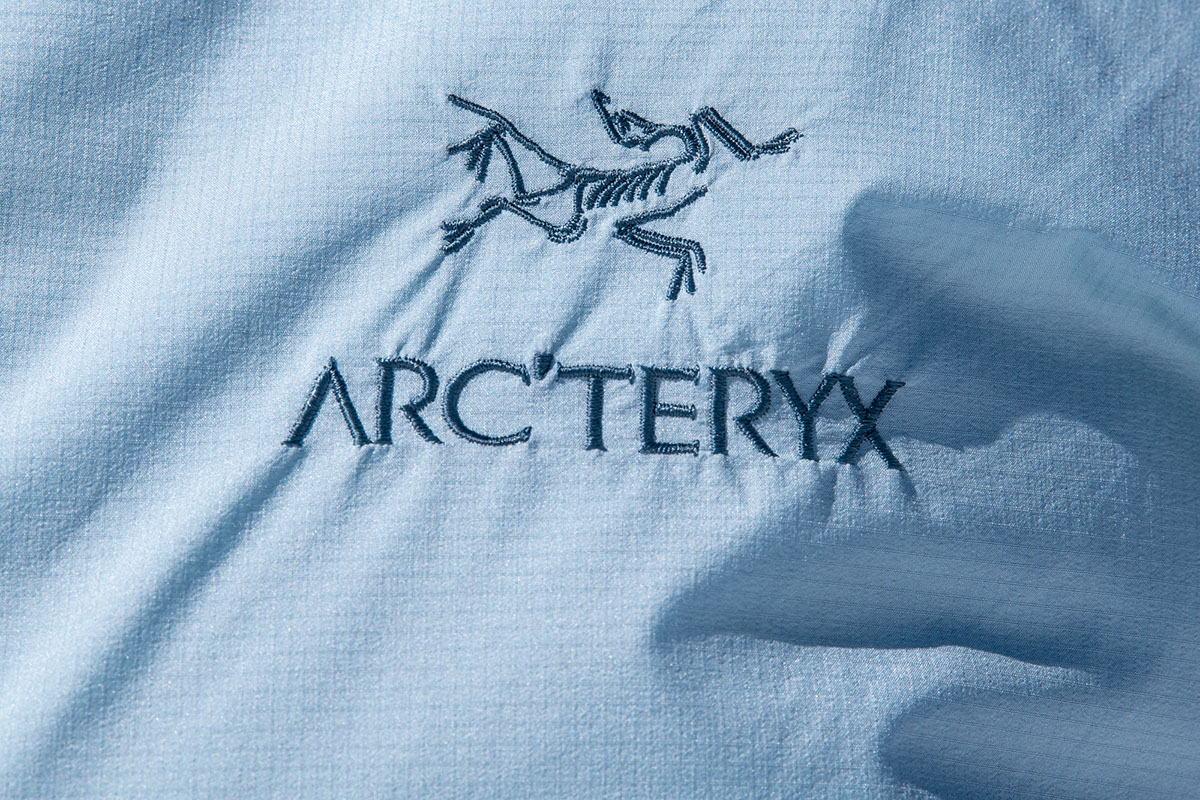
The original Atom SL was one of the first Arc’teryx items I tested, and I immediately came to appreciate its excellent fit. And the same holds true for the new one: The medium size has a trim cut that’s perfect for my build (for reference, I’m 5’9” and 155 lbs.). Combined with the excellent comfort from the stretchy fabrics, it’s been flawless for active and everyday use. I’ve worn the Atom SL over a range of baselayers (from ultralight to heavyweight) and never had an issue with mobility, and its low-profile design means it easily slides under a shell. Finally, as I touched on above, the jacket has a slightly longer cut at the back (29.1 in.) and fairly long arms, which are great for applications like climbing or cycling. That said, the length is still entirely workable for other activities or when wearing the jacket as a midlayer.
Arc’teryx was quiet on the sustainability front for some time, but they’ve recently made some key improvements to their line. With the latest update, the Atom SL Hoody now boasts bluesign-approved stretch fleece side panels, indicating that those materials have been certified as safe for the environment, workers, and consumers. Certain colors of the jacket's liner are also dope-dyed (also known as solution-dyed), which means that pigment was added early on in the production process to conserve water, reduce CO2 emissions, and decrease fading over time. We’d still like to see some additional changes—including switching to a PFC-free DWR—but we nevertheless appreciate Arc’teryx’s ongoing sustainability efforts.
We put the men’s Atom SL Hoody through its paces for this review, and Arc’teryx also makes the jacket in a women’s version. The women’s Atom Lightweight Hoody (previously known as the "Atom SL")costs the same at $240 and sports an identical build and feature set, but it’s lighter at 8.4 ounces and is available in different colorways (five at the time of publishing, including a bright magenta and classy light purple). In addition to the hoodies, Arc’teryx also makes the Atom SL in a vest version. The men’s vest weighs just 6.3 ounces, costs $149, and is very similar in overall design to the hoody reviewed here. To round out the superlight offerings, Arc’teryx more recently released the Atom SL Anorak, which shares many of the same features but boasts a single chest pocket and partial zipper at the front ($209; 8.6 oz. for the men’s version).
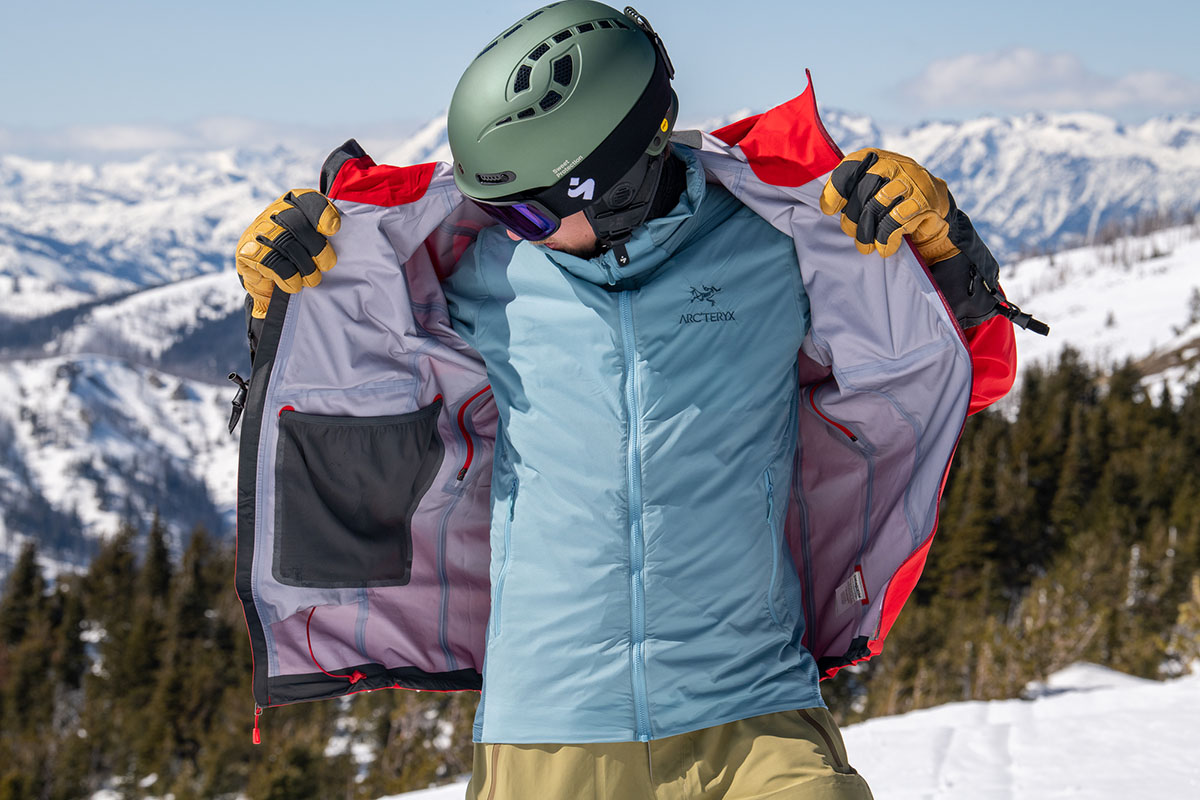
| Jacket | Price | Weight | Insulation | Fabric | Packable |
|---|---|---|---|---|---|
| Arc'teryx Atom SL Hoody | $229 | 9.5 oz. | Coreloft Compact (40g) | 20D | No |
| Arc'teryx Proton FL Hoody | $259 | 11.4 oz. | Octa Loft | 20D | No |
| Arc'teryx Nuclei FL | $299 | 11.5 oz. | Coreloft Continuous (65g) | 10D | Yes |
| Patagonia Thermal Airshed | $259 | 8.3 oz. | PlumaFill (65g) | 33D | Yes |
| Patagonia Nano-Air Hoody | $299 | 12.2 oz. | FullRange (60g) | 33D | Yes |
We love the Atom SL Hoody for its solid weather protection, light weight, and versatility. In the synthetic jacket market, one of the Atom SL’s closest competitors comes from in house: the Proton FL Hoody. The Proton is purpose-built for alpine and rock climbing with a competitive 11.4-ounce weight, thin 20-denier shell fabric, and light dose of Octa Loft insulation. Stacked up, the Atom SL is lighter and offers better protection against wind and water (with the exception of the side panels). That said, the Proton is the much better breather, making it the superior choice for consistent high-output use.
Another ultralight piece from Arc’teryx to have on your radar is the Nuclei FL. Right off the bat, we’ll note that this jacket offers significantly more warmth than the Atom SL with lofty 65-gram Coreloft Continuous throughout. It’s also a little heavier at 11.5 ounces but more delicate with a 10-denier face fabric (for more, see our in-depth Nuclei FL review). Both jackets are tuned for climbing but fall into different categories: the Nuclei is a great belay jacket for shoulder seasons or cooler days, while the Atom SL is the better all-around option for stop-and-go activities.
As I touched on above, Patagonia’s Thermal Airshed utilizes a similar hybrid insulation concept to the Atom SL, with synthetic PlumaFill insulation (65g) only at the front and under the arms. This makes the Patagonia an excellent breather, and it also clocks in slightly lighter than the Atom SL at 8.3 ounces. The biggest downside is versatility: the Thermal Airshed is only offered in a non-hooded jacket option, and it also forgoes hand pockets (although you do get two internal pockets, one of which doubles as a stuff sack). Given the more targeted and streamlined build, the Patagonia strikes us as a better match for running and occasional use as a midlayer, while the Atom SL gets the advantage as a performance outer layer and for wearing around town (for $30 less).
Finally, Patagonia has discontinued their Nano-Air Light Hybrid, which was a closer competitor to the Atom SL, but their standard Nano-Air Hoody remains a standout in the active insulation market. Comparing the two, the Nano-Air is quite a bit warmer with 60-gram synthetic used throughout, and its breathable shell fabric and lining means it’s a very solid ventilator. However, the Atom SL easily wins out in weight and packability (the Nano-Air is considerably heavier at 12.2 oz.) and is more functional for mild-weather conditions like spring and fall hiking (the Nano-Air is a bit warm here). But as a daily piece that can take you deep into the backcountry, the Nano-Air is hard to beat, which is why it’s consistently been one of our top-rated synthetic jackets and midlayers.